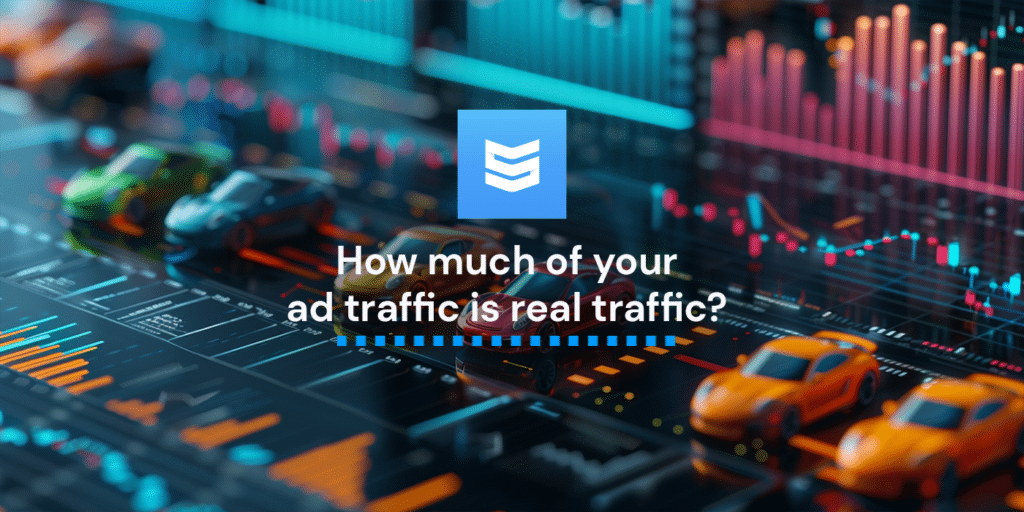
When CPCs are high and the cash is low, you can’t afford to burn money.
But that’s exactly what you might be doing. Because there are entire cyber highways online that are occupied by bots. And that traffic goes straight to your website as well.
Only, unlike real people, bots are either just passing through—or have malicious intent.
Let’s look into how much of your traffic might be bot traffic, why that’s bad for your business, and finally—how to fight against it.
🖱️📈 Clicking on each individual chart will take you to its interactive board.
The amount of human traffic is declining again
At one point in the internet’s history, bot traffic accounted for more than half of all online traffic.
Most of that bot traffic wasn’t malicious, however. Good bots—such as search engine bots or marketing software bots—took up most of this share. That’s good, just like the bots.
However, in recent years, a new problem has emerged. Let’s look at this chart:
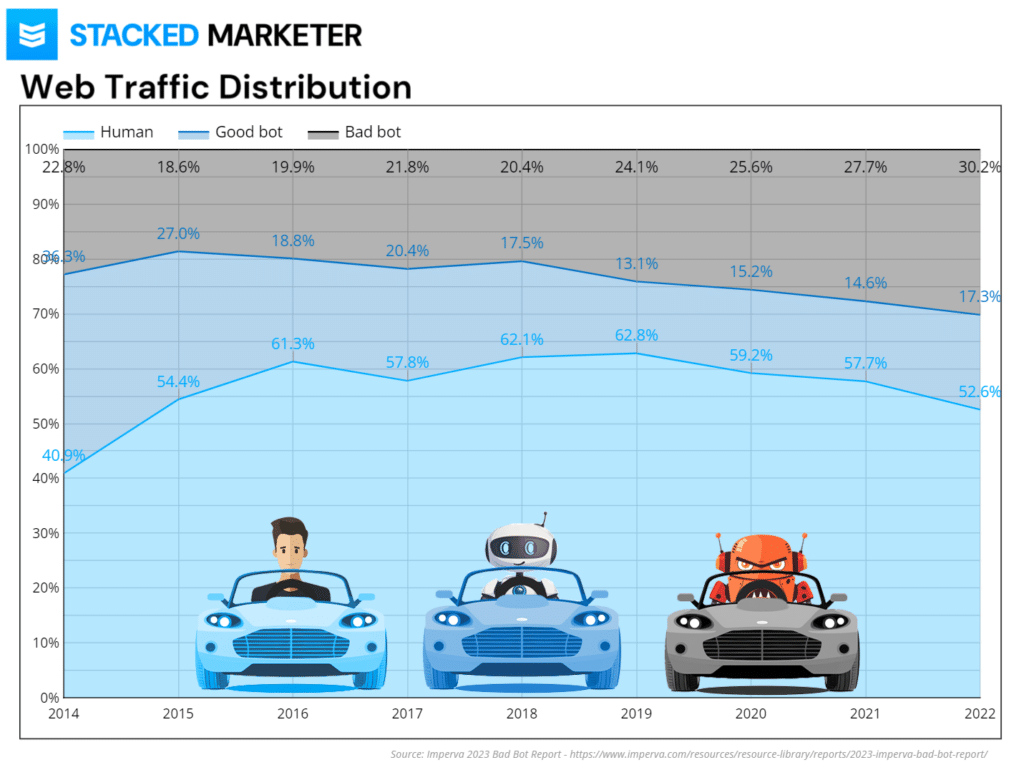
Do you notice how the gray area expanded in the past couple of years?
Now that… That’s not good.
So not only has human traffic decreased by 10% since 2019, bad bot traffic has gone up by 6% during the same period.
What does this mean: More of your web traffic is invalid and often malicious.
As an advertiser, this can also mean a lot of the money you spend on ads can be fake traffic. In other words, you could be throwing it away.
🤖What is the difference between a good bot and a bad bot?
Good bots follow the rules you have in your robots.txt file and are used mainly by search engines and other software that monitor or aggregate content. We need good bots to get our website visible on Google, to track analytics, check backlinks, and more.
Bad bots are malicious. They can be simple scrappers but also very complex, human-like users that are difficult to detect and can perform DDoS attacks, take over account info, and more.
Which industries are most susceptible to bad traffic?
Bad bots are more common in some industries.
For example, the online gaming industry is quite susceptible to bad bots since they can create fake accounts or cheat codes and exploit the game for financial or other benefit.
So the chart below shouldn’t surprise you much:
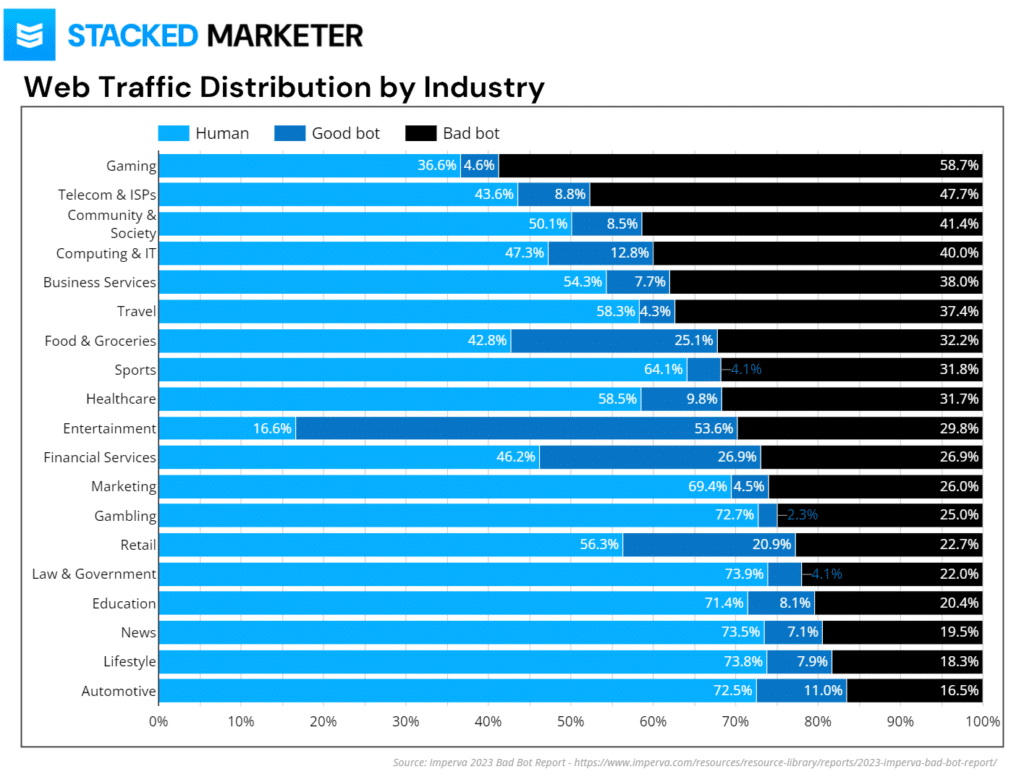
There’s a big chance that your industry has at least a fifth of its online traffic coming from bad bots.
Here are some of the potential things you should worry about depending on your industry:
- Food and groceries and retail websites: Price scraping (can be from good or bad bots), account takeovers looking for stored payment data, abusing loyalty points or discounts, fraudulent purchases.
- Community and social media: Fake accounts, fake engagement and clicks, spreading fake news, malware clickbait links, and more.
- Marketing: Scraping proprietary content (and reusing it), ad fraud, skewing, and more.
As you see, bot traffic can pose a serious problem for anyone who does marketing. And on any channel.
🧿Data Centers, biggest culprits: 59% of all bot traffics comes from data centers—which are both convenient and allow you to deliberately avoid identification. For example, the use of Amazon’s Web Services for bot traffic is close to an all time-high at 17.4%.
🤖 Not-so-fun fact: 72% of bad bot traffic comes from the US. Mostly thanks to bot-favorite public cloud data centers that originate in the US.
How much are you actually spending on your ads?
Now comes the juicy part.
If almost half of all traffic online is bot traffic, how much of it you’re actually paying for?
Well, the bad news is that you’re probably wasting more money now than a couple years ago:
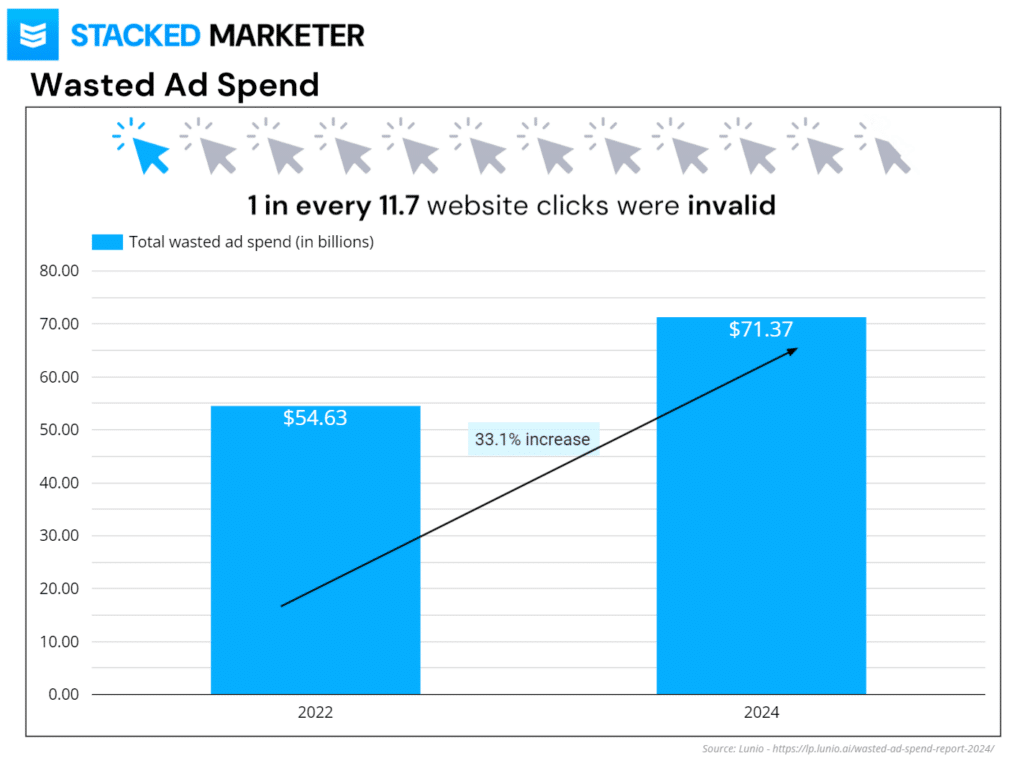
A 33% increase in invalid traffic with 1 in every 12 clicks being an invalid click that you’ve paid for.
🖱️ No click is free: Let’s take the above stat and do a little calculation. If your running ads average CPC is, let’s say $3—on every 1200 clicks you’ve thrown $300 down the drain. Now imagine how it is for some industries where CPC can be $20 or $30. Ouch.
And here’s how it looks like broken down by industry:
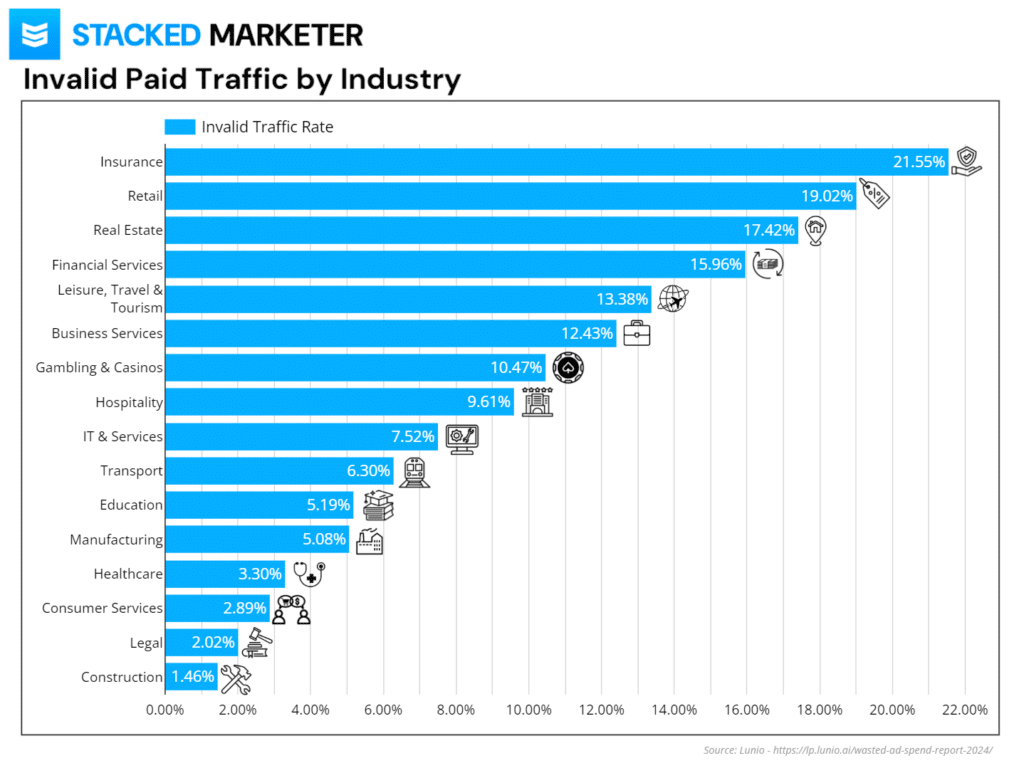
So if you’re in insurance, retail, or real estate—there’s a big chance that a lot of your ad spend is hijacked by bad bots.
Which platforms have the biggest rate of invalid traffic?
Let’s cut to the chase:
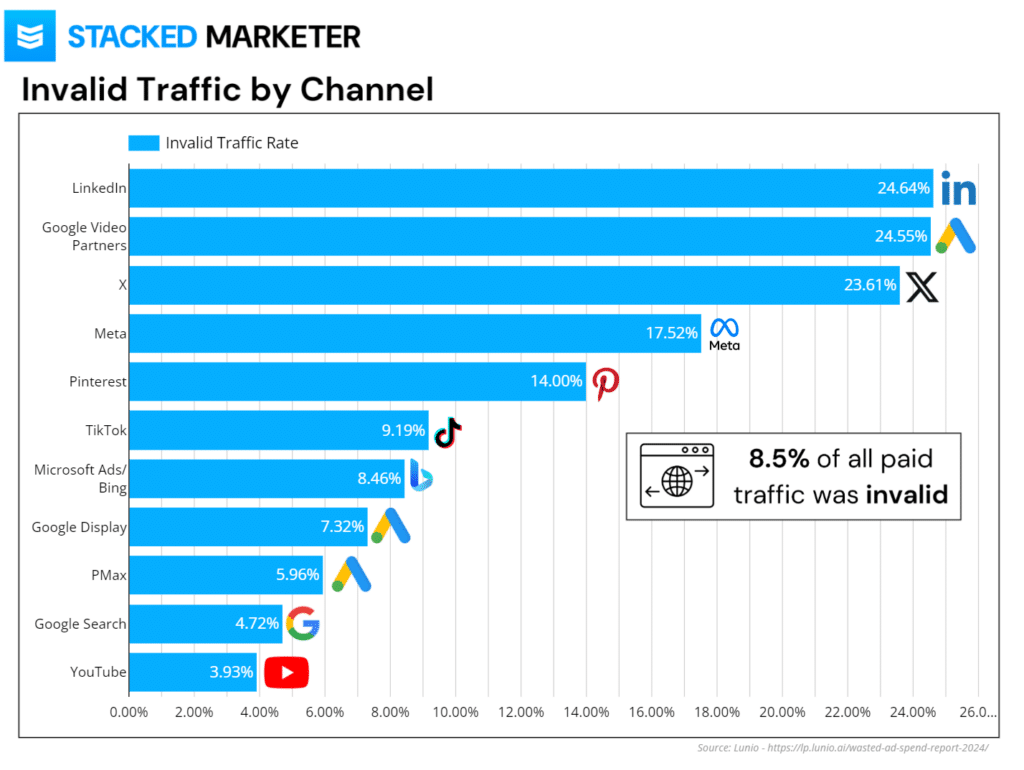
Yes, it means what you think it means.
If you’re advertising on LinkedIn, almost a quarter of your traffic comes from bots. Which is almost the same for X.
Google’s ad products are somewhat more bot-proof, but not entirely. So you should always keep an eye out for those pesky bad bots.
🛡️ Fight the bad bots
Reports say 30% of users never tried to block bot traffic manually—relying on platform defenses to filter it out. That’s not enough.
Instead, you may want to invest in third-party bot blocking tools, conduct thorough audience exclusions in your ad manager, and filter and blacklist IPs.
Also, keep an eye out on any suspicious traffic spikes, or traffic from suspicious sources, and react immediately.
Bot traffic in emails
Emails have an entire bot traffic problem of their own. Trust us, we know.
The main issue: When you’re doing email marketing—or running a newsletter like us—your numbers matter. How many users opened? How many users clicked?
Without tracking data, you can’t get accurate information and you can’t run a proper business. So are you doing something about it?
If not, here’s why you should:
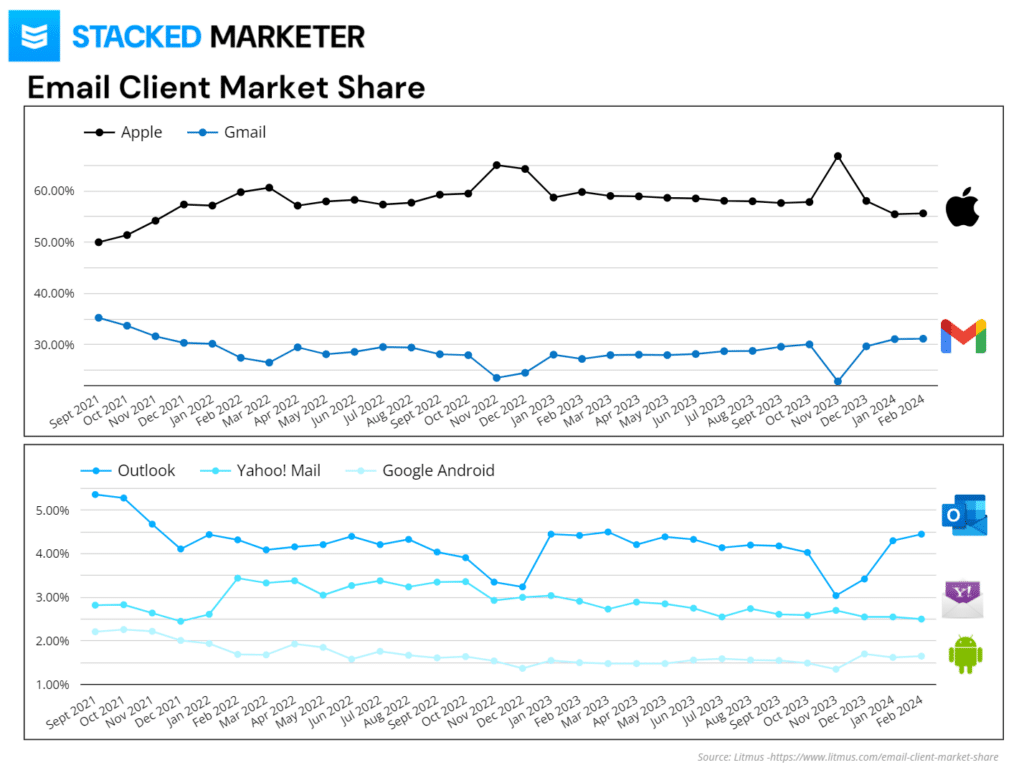
This graph shows the market share of all email opens up to 2024.
In 2019, before Apple Mail Privacy Protection (AMPP) Apple and Gmail were almost equal on this list (around 29%), however Apple’s open rate is now almost 100%. Hence the inflated numbers – and skewed stats.
That’s because AMPP preloads emails on their proxy servers—which could lead to a much higher email open rate—and consequently a lower click-to-open rate.
Here’s the proof:
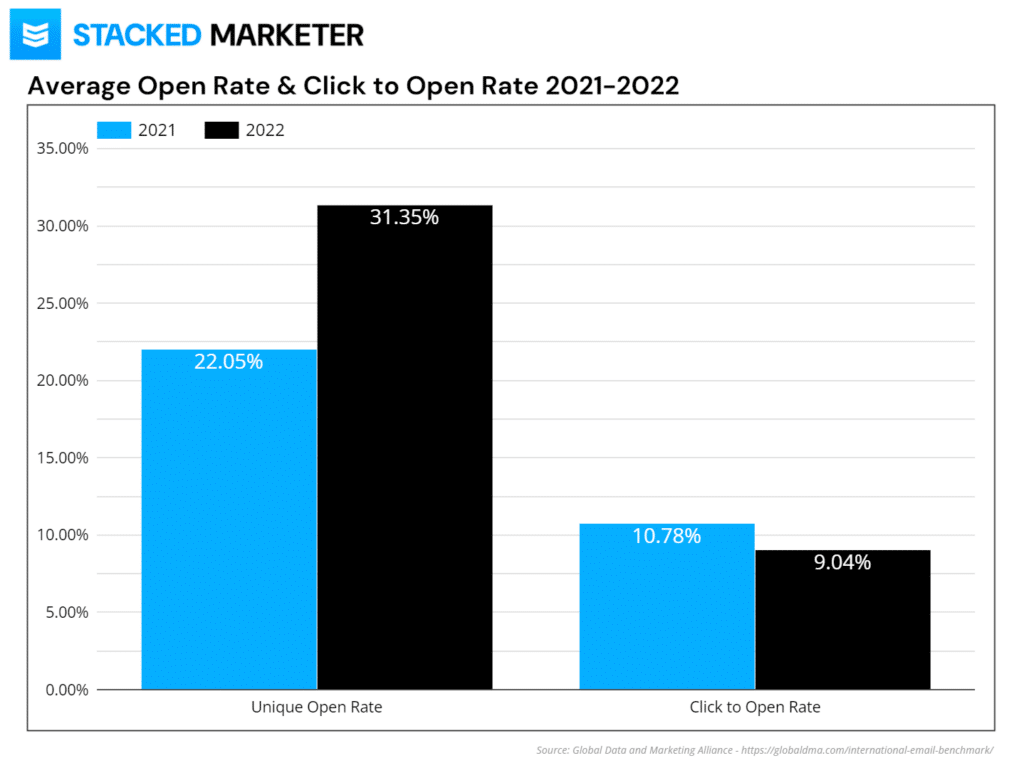
And this is just one of the problems.
Another thing to pay attention to are bot clicks and firewall clicks.
You can count them as “good bots” as they have a noble cause—to scan emails for any suspicious and malware links and either block them entirely or mark them as spam.
However, they can skew your metrics by a lot. In fact, one email service provider (ESP) claims that 63% of all email clicks come from bots.
That’s not something you’d want to mix up when providing metrics to potential sponsors, or tracking your email marketing performance.
How to deal with email bots?
Machine clicks have a relatively common pattern so either your ESP or even you should be able to segment them or exclude them in your reporting.
These patterns include:
- Instantly clicking at least one link within 5 minutes since the email was sent.
- Clicking in every single email received.
- Location is a known Amazon or Microsoft data center such as Ashburn and Boardman.
Your ESP has access to more data, so they should be able to filter these clicks out.
Calling the Bot Police
The data points out that bad bots are on the rise, despite platforms’ efforts to eliminate them.
And this rise poses significant challenges—particularly in advertising and email marketing. Which is why you should be well-equipped to deal with it.
What can you do? You can invest in proactive measures like third-party bot blocking tools, audience exclusions and follow our email guides to try and stay on top of things.
It’s time to stop some bad, bad bots…

Level up your marketing skills at no cost!
Stacked Marketer was built to filter through the daily noise that exists in the marketing world. It’s a digital marketer’s 7-minute daily read, jam-packed with the latest news, trends, tech and actionable advice.
100% Free.
No Spam.
Unsubscribe any time.
Sources
The report sourced data from the following:

